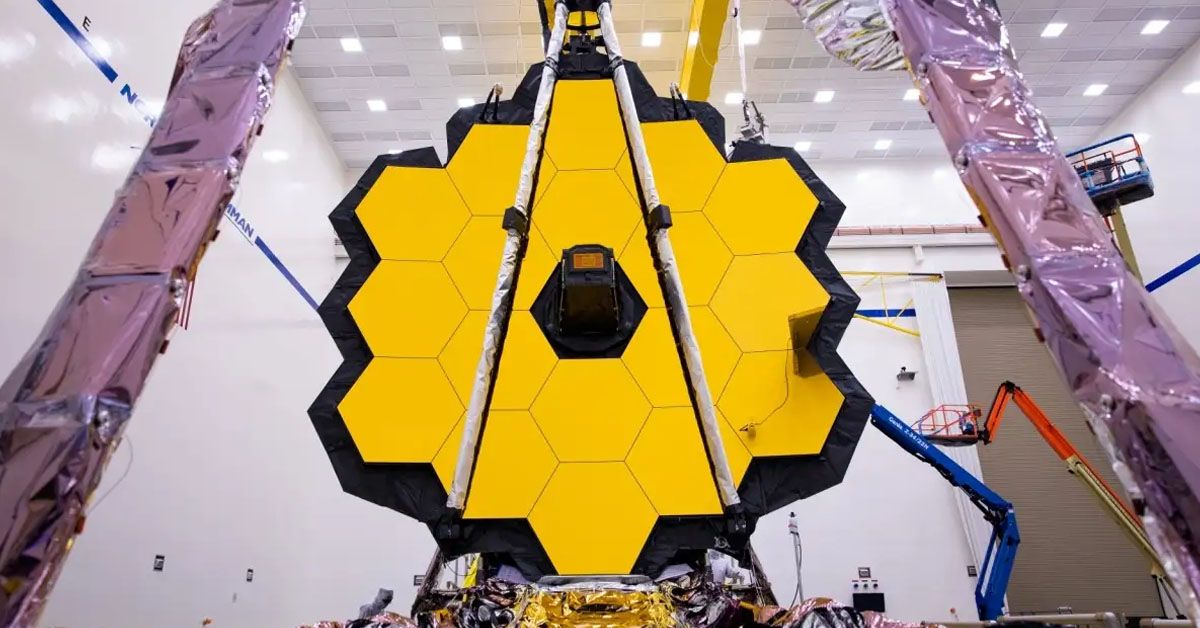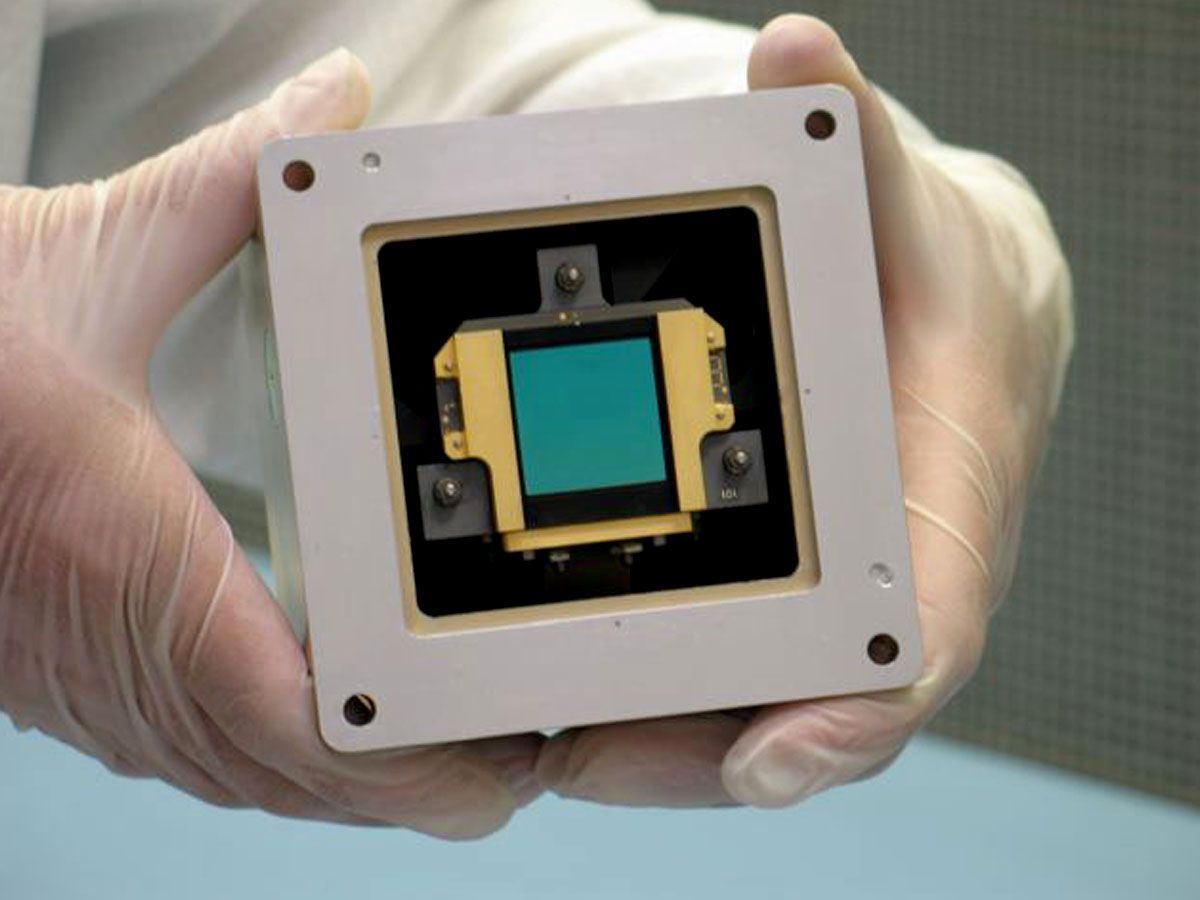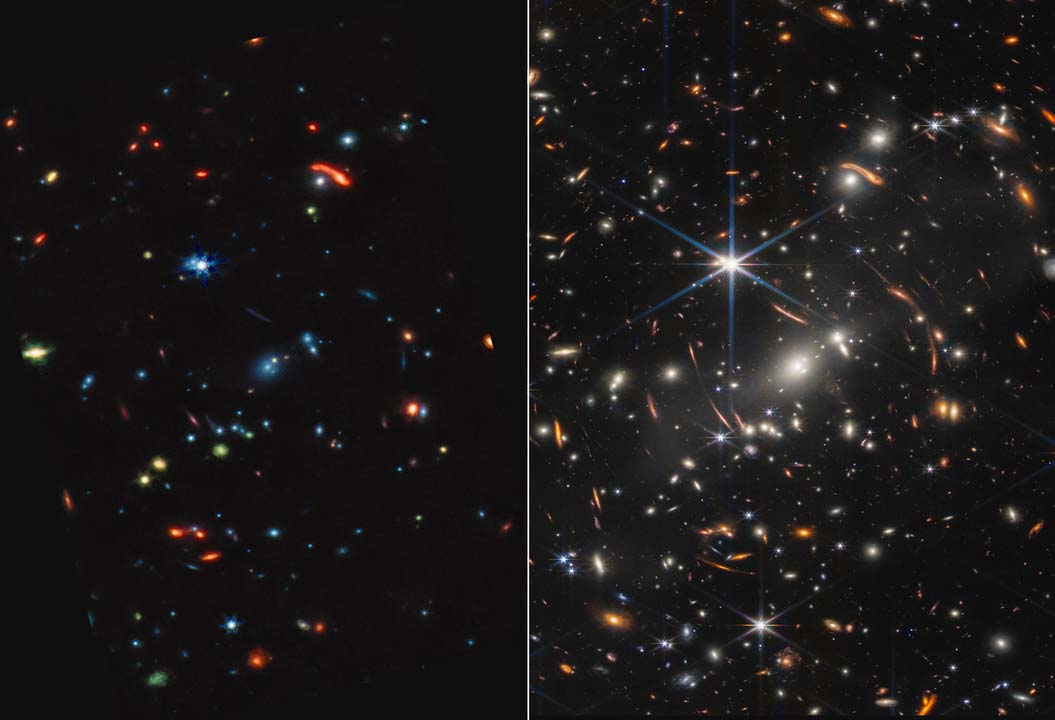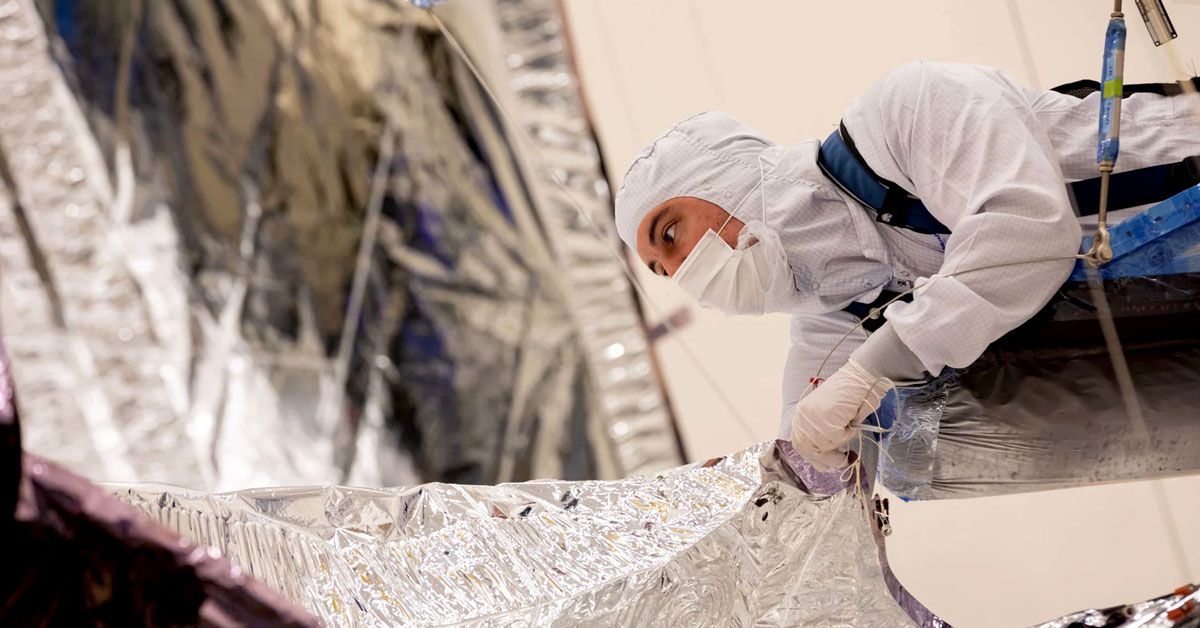The James Webb Space Telescope (JWST) stands as an impressive testament to our insatiable curiosity, and our determination to understand all corners of space. A joint endeavor between NASA, ESA, and CSA, this revolutionary observatory has been engineered to peer deep into space's dark corners, even those out of reach of previous space telescopes like Hubble. A vital tool within its scientific toolkit is MIRI, an essential piece that broadens JWST's viewing power far beyond earlier space telescopes.
A product of collaboration between ESA and NASA's Jet Propulsion Laboratory (JPL), MIRI is an intricately designed apparatus. Its mission is to survey the mid-infrared segment of the electromagnetic spectrum, spanning approximately 5 to 28 micrometers. The function of MIRI is crucial. It equips the JWST with the ability to detect occurrences invisible in other wavelengths, effectively parting the cosmic veil to reveal a section of the universe that has remained largely concealed from our observations.
What is MIRI and its Significance?
MIRI, short for Mid-Infrared Instrument, represents an ingenious leap in space-based observational technology. More than a mere instrument, it's a multi-faceted marvel engineered to decode the universe's most profound mysteries. It's an intricate piece of equipment designed to discern and measure the mid-infrared region of the electromagnetic spectrum, specifically from around 5 to 28 micrometers.
Occupying a crucial role in the James Webb Space Telescope, MIRI serves as the telescope's lens into the often obscured mid-infrared realm of the cosmos. It's poised to illuminate celestial events that have remained invisible to other instruments, effectively revealing the concealed corners of our universe. By doing so, MIRI enhances our understanding of the cosmos, taking us back to the nascent universe, examining the genesis of stars and galaxies, and probing the potential existence of life beyond our planet on distant exoplanets.

MIRI stands as a shining example of global cooperation, its creation being the result of concerted efforts from ESA and NASA's Jet Propulsion Laboratory (JPL). This alliance symbolizes the fusion of international prowess, uniting leading minds in the industry to forge an instrument whose whole significantly surpasses its individual components.
The beauty of MIRI lies not only in its sophisticated design but also in its adaptability. Its versatility stems from its ability to perform a variety of observational modes, from imaging and spectroscopy to coronagraphy, thereby broadening the range of scientific investigations JWST can undertake.
Features of MIRI
MIRI possesses a versatile suite of functionalities, all integral to its wide-ranging astronomical capabilities. It engages in imaging, a process that generates intricate visual representations of cosmic objects. Additionally, it practices spectroscopy, a method that breaks down light emissions from these entities to scrutinize their elemental makeup and inherent characteristics. MIRI also employs coronagraphy, a technique that uses a special device to obscure starlight, allowing the observation of comparatively dim objects in close proximity, like exoplanets.
Operating MIRI, however, is not without its challenges. Given its sensitivity to heat, it requires a complex cooling system to function effectively. The instrument must be kept at a cryogenic temperature, below -266 degrees Celsius, to prevent its own heat from interfering with the observations. This necessitates a sophisticated sunshield on the JWST to protect MIRI, a task that requires precision engineering and careful navigation. Despite these challenges, the potential scientific returns from MIRI make these efforts worthwhile, heralding a new era of mid-infrared astronomy.
The Optical System of MIRI
MIRI's optical system is an exemplary feat of engineering. It has been meticulously designed to perceive and decipher mid-infrared light, a part of the electromagnetic spectrum that carries invaluable cosmic data but is notoriously difficult to study from Earth due to the meddling influence of our atmosphere. The optical system is an intricate assembly of precision-engineered mirrors and lenses. These elements work in concert to concentrate the incoming light onto delicate detectors. These detectors then transform the light into electrical signals that scientists can scrutinize and interpret.

A distinguishing feature of MIRI is its need for extremely low operational temperatures. Unlike its counterparts on the James Webb Space Telescope, MIRI needs to be kept at a frigid -266 degrees Celsius (just above absolute zero), to prevent its own heat from interfering with the observations of faint heat sources in the universe. This is achieved through a dedicated cooling system known as a cryocooler, a technology that uses helium gas to transfer heat away from MIRI.

The cooling system's importance cannot be overstated. It not only ensures the optimal functioning of MIRI but also maximizes its sensitivity to the faintest of mid-infrared signals, enabling the instrument to capture the clearest possible images and spectra of astronomical phenomena.
MIRI's Observing Capabilities
MIRI's ability to observe the universe is uniquely powerful. By observing in the mid-infrared region of the electromagnetic spectrum, MIRI can detect thermal emissions from cool objects in space, such as distant galaxies, forming stars, and dust-enshrouded celestial bodies. It can also observe the chemical fingerprints of various elements and compounds, making it a crucial tool in the search for life's building blocks in the universe.
However, observing at mid-infrared wavelengths is not without its challenges. In addition to the necessity of extremely low operating temperatures, MIRI also has to contend with the inherent faintness and rarity of mid-infrared signals. The instrument must be highly sensitive and have a wide field of view to capture these elusive signals effectively.
Operational Aspects of MIRI
Once the JWST had been securely positioned at the second Lagrange point (L2), approximately 1.5 million kilometers from Earth, the operational phase for MIRI began. This phase is unfurled in a carefully choreographed sequence of events. The initial weeks were dedicated to the commissioning of MIRI and other instruments, a process of fine-tuning that ensured everything was working as planned.
Calibration was an essential part of this phase. MIRI's detectors were calibrated against known celestial sources to ensure the accuracy of the data it would collect. This process allowed researchers to translate the signals MIRI received into valuable scientific data.

Once the calibration was complete, the real magic began. MIRI started its primary role of observing the mid-infrared universe, capturing unprecedented views of celestial phenomena. Every bit of data MIRI collected was meticulously recorded and transmitted back to Earth, where eager scientists stood by to decode the mysteries of our universe. It was a complex process, but one that promised to unlock new layers of understanding about the cosmos we inhabit.
MIRI's Role in the Evolution of Astronomy
MIRI holds enormous potential to reveal groundbreaking information about the universe, effectively paving the way for new discoveries in the field of astronomy. The capabilities of MIRI's camera and spectrograph are unparalleled, allowing for precise measurements of temperatures, chemical composition, and other crucial properties of cosmic objects. This versatility enables researchers to explore a diverse range of astronomical phenomena, from studying the formation of stars and galaxies to observing comets and the Kuiper Belt.
MIRI's camera captures images of celestial objects in the mid-infrared wavelength, a region of the spectrum that is rich in information but challenging to observe due to the Earth's atmosphere. With MIRI, scientists can study the early universe and trace the formation of the first galaxies. They can also study the atmospheres of exoplanets and search for signs of habitability. MIRI's spectrograph, on the other hand, enables researchers to identify the composition of celestial objects by analyzing the way they interact with light.

Future Prospects and Challenges
As with any complex instrument, MIRI faces potential challenges that could impact its performance. One of the significant challenges is the need to maintain a stable operating temperature. The instrument's detectors are sensitive to heat, and even the slightest variation in temperature could compromise the quality of the data collected. To address this issue, MIRI is equipped with a unique cooling system that uses a combination of passive and active cooling to maintain a stable temperature. Despite the potential challenges, the future prospects of MIRI are exciting.

As scientists utilize MIRI to explore the universe, we can expect to gain new insight into its workings. Thanks to its mid-infrared viewing capability, MIRI serves as an invaluable tool in our quest to understand the origins of galaxies, potential life outside our solar system, and their formation among many other topics of interest. MIRI holds immense scientific promise, and its continued success will surely play an instrumental role in increasing our knowledge of cosmic developments.
Sources: esa.int [1] [2] / nasaspaceflight.com / nasa.gov / stsci.edu / webbtelescope.org













